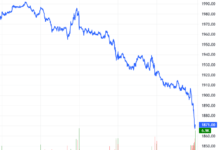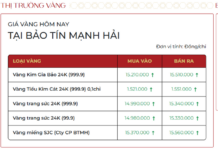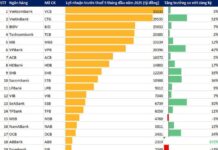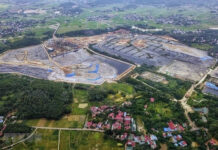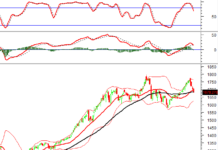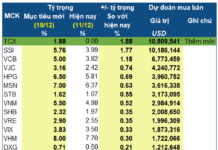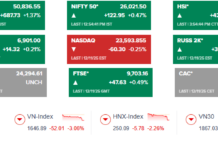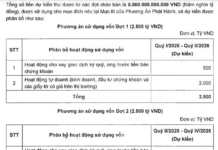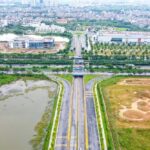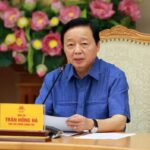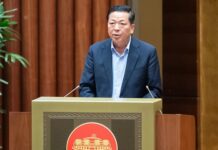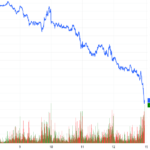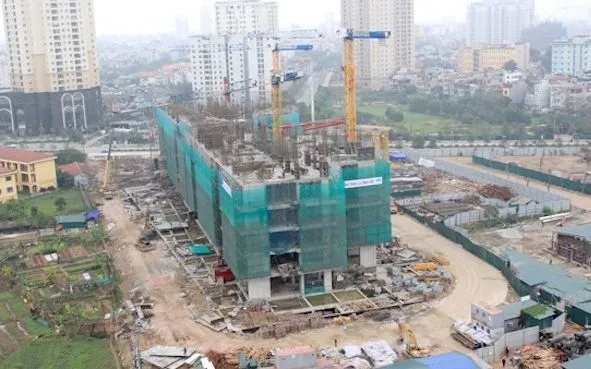
The Ministry of Finance has proposed a tax rate of 20% of the land price for areas within the residential land limit and 30% for areas exceeding the limit.
The Ministry of Finance’s draft amendment to Decree 103/2024/ND-CP on land use fees and land rents has attracted great attention from the public. While the current regulations are legally sound, they impose a financial burden that is beyond the means of millions of households, individuals, and businesses. With the 2024 Land Law coming into effect, this is not just a technical issue of calculating financial obligations but also a test of the government’s ability to formulate fair, reasonable, and feasible land policies.
Numerous shortcomings
One of the biggest shortcomings is the way land use fees are calculated when households and individuals are allowed by the State to change the land use purpose to residential or are recognized for residential land use rights. The current regulation applies 100% of the land price according to the land price frame for the whole area, regardless of whether it is within or exceeds the residential land limit.
This results in an excessively high amount, far beyond the actual financial capacity of people. Mr. Le Hoang Chau, Chairman of Ho Chi Minh City Real Estate Association (HoREA), cited an example of a 400m2 land plot in Nghe An province where the land use fee amounted to VND 4.5 billion. Another case in Hoc Mon district (Ho Chi Minh City) had to pay VND 1.7 billion, and in the old District 7 (Tan Thuan ward, Ho Chi Minh City), the figure soared to VND 14 billion. Compared to the average income and financial capacity of most households, this fee is almost impossible to afford.
Many households have chosen to withdraw their applications for land-use certificates. This leads to budget losses for the State, weakens land management, fosters underground markets, and affects the rights and interests of the people. Meanwhile, the policy of “deferring land use fees” restricts people’s disposal rights over their land, such as mortgaging, transferring, giving, or contributing capital. As a result, the most valuable asset of many people – their land – is effectively frozen.
Moreover, the land prices in the price frame have been adjusted in many localities, especially in Ho Chi Minh City, with increases ranging from 2.36 to 38.8 times compared to the 2020-2024 period. If the 100% mechanism continues to be applied, the financial burden will multiply. Consequently, instead of encouraging the legalization of land use rights, the policy inadvertently creates a barrier that hinders the transparent real estate market.
In light of these shortcomings, the Ministry of Finance has drafted amendments to the Decree and prepared a “Government Resolution” to address the issues. Notably, the proposal to distinguish between tax rates for areas within and exceeding the residential land limit is a positive step. The Ministry has proposed a tax rate of 20% of the land price for areas within the residential land limit and 30% for areas exceeding the limit.
This adjustment is crucial as it brings the land policy back to the principle of fairness. Land within the limit is associated with the minimum and essential needs of each family, so it deserves to be incentivized, while the area exceeding the limit reflects accumulation and investment capabilities, justifying a higher rate. More importantly, this approach harmonizes the interests of the State, the people, and the market. Mr. Pham Minh Dong, CEO of Asia Vietnam Investment Company (Ho Chi Minh City), analyzed: “The state budget still has revenue, people are relieved of the burden, and the real estate market is unblocked when official transactions replace the black market.”
Proposed new land use fee rates
– Within the residential land limit: 20% of the land price frame.
– Exceeding the limit: 30% of the land price frame.
– Proposed adjustment range for land rent: 0.25-1.5% (instead of 0.25-3%).
– Example of increased rent: Company R at Khanh Hoi Port: nearly VND 21 billion in 2025 (6.36 times higher than in 2022)
However, if the decision-making power is left entirely to local authorities, it may lead to inconsistencies across provinces and cities, undermining the unity of the law. Therefore, according to Mr. Le Hoang Chau, the Government should set the 20% and 30% rates as a “standard” nationwide, allowing localities to apply them flexibly within that legal framework.
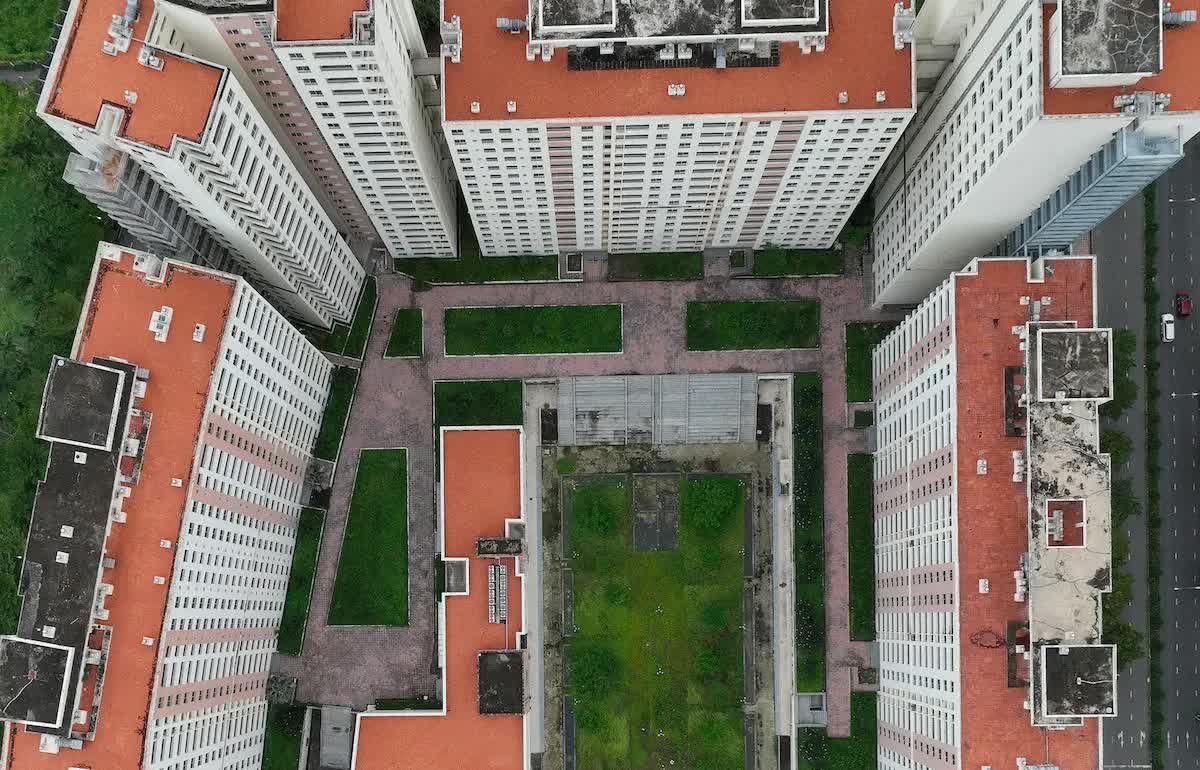
People and businesses need a stable and transparent land policy to feel secure in their residences and confident in their investments.
Along with land use fees, land rent also needs clarification. The regulation setting the range of 0.25-3% of the annual land rent has shocked many businesses. For instance, Company R, which rents a 11,000 m2 warehouse at Khanh Hoi Port, has to pay nearly VND 21 billion in land rent for 2025 – an increase of 6.36 times compared to 2022. While the Government has issued Decree 230/2025/ND-CP reducing land rent by 30% for 2025, this is only a temporary solution. If the frame is not adjusted to a more reasonable range (for example, 0.25-1.5%), there is a risk of breaking the production chain, skyrocketing logistics costs, and eroding the competitiveness of the economy.
Notably, the proposal to supplement the regulation on “calculating land price before changing the purpose” in cases of inheritance or legal transfer of land use rights from households or individuals is a progressive step, protecting the legitimate rights and interests of the people while preventing state budget losses.
A Proposal to Reduce Land Use Fees for Residential Purposes
HoREA has proposed that in the event of a Government Resolution, the collection of land use fees when converting agricultural or non-agricultural land to residential land should be clearly specified. They suggest a reduction from 30% to 20% for land within the allocated residential land limit, and from 50% to 30% for land exceeding this limit.
“Debunking Rumors: Danang Authorities Refute Land Price Surge Claims”
The Danang Department of Natural Resources and Environment has clarified that land prices have not increased tenfold, but rather have been adjusted within the prescribed scope. They assert that the claims made by residents are inaccurate and that any changes are in line with the relevant regulations.
“A Proposal for a Self-Declaration and Self-Payment System for Land Use Charges”
The Ho Chi Minh City Institute of Resource Economics and Environment has proposed that businesses be allowed to self-declare and pay land use fees independently. This proposal aims to streamline procedures, reduce arrears, and boost investment activities by granting businesses autonomy in declaring and paying land use fees.
Unlocking Land Potential: Reducing Financial Burdens for Citizens when Changing Land Use
“Vietnam’s Deputy Prime Minister, Mr. Tran Hong Ha, has highlighted a pressing issue regarding land prices. According to local reports, there has been a sudden surge in land values, resulting in significantly higher payments for citizens. This unexpected development has caught the attention of the government, with the Deputy Prime Minister taking note of its impact on the people.”

